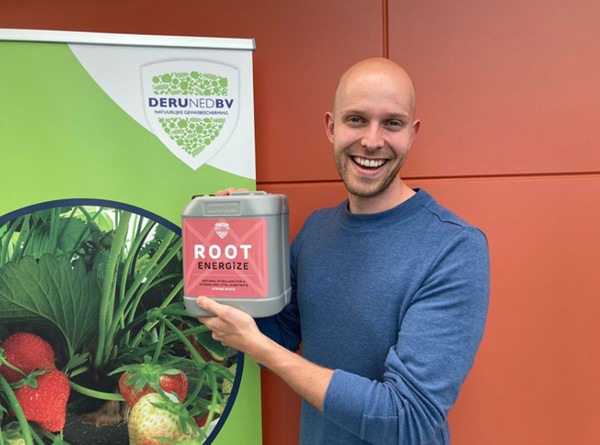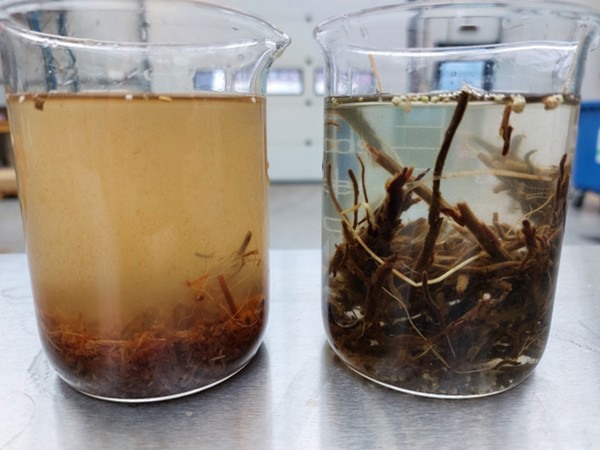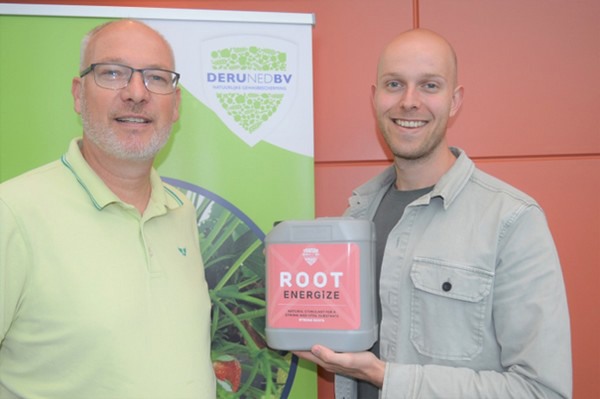Biostimulants are not actual nutrients, but they do stimulate the natural nutritional processes of plants, reports Houweling. So these are fertilizers rather than plant protection products because these substances, mixtures, and microorganisms are purely intended to help the plant use nutrients more efficiently or make the plant more resilient to fluctuations in temperature, amount of light, or water (a-biotic stress) and improve quality characteristics, or increase the availability of nutrients in the soil.
They increase the efficiency of fertilizers, so plants need fewer nutrients.
Among other things, bacteria are used as biostimulants. But don't forget the powers of enzymes. We spoke to Thomas Douma of Houweling Horticulture about their enzyme-based biostimulant, Root Energize: "Root Energize is an enzyme preparation. It digests the dead root residues in the substrate."

Thomas Douma
"This digestion makes way for new (hair) root formation, and thus, the substrate maintains its draining capacity. The enzyme converts dead material (hemicellulose) to glucose. Glucose gives the plant and beneficial microorganism strength and makes it stronger. As a result, pathogens (fungi and bacteria) have less chance to strike."
Root Energize is used in substrate cultivation; naturally, substrates such as coco, perlite, and rockwool do not contain similar enzymes. You can think of Root Energize's enzyme as the catalyst for the digestion process of dead root residues; the slab becomes cleaner, the slime layer dissolves, and hair-root growth gets a boost.
Incidentally, this product is totally in keeping with the spirit of the times; there is more focus on prevention to prevent diseases. Making the plant more resilient seems to be the motto.

Both measuring cups contain dead root remains. After a week, one can see (on the left) that digestion has started (by adding Root Energize). In the Erlenmeyer flask on the right, containing only water, one can clearly see that the digestion process has not yet started.
Dosage
Root Energize starts the digestion of dead root remains. The moment of administration is ideally when the first dead roots appear in the slab. Then drip the substance weekly. This can be done at the same time as other microorganisms. Make sure it does not flow through the pipes at the same time as hydrogen peroxide and/or chlorine.
Trials
Root Energize is one of the products marketed by Houweling under the brand name Deruned. Since last year, Deruned has been part of Houweling.
Root Energize is the improved version of Modicell. Modicell had already proven itself and so has now become even better. The first trials with Root Energize have started. Testing is now underway on various crops: plants, flowers, and vegetables. Very specifically, these include anthurium, gerbera, and sweet pepper. "The crops grown on the substrate will benefit from this product," says Thomas Douma.

Ronald de Vreede and Thomas Douma
Houweling Horticulture
Houweling Horticulture is a supplier of suppliers to the greenhouse industry. Their portfolio includes biocides, glass cleaners, vermiculite, biostimulants, demi-water, and screening agents.
For more information:
Houweling Horticulture
Klappolder 104
2665 LP, Bleiswijk
Tel.: +31 (0) 6 5137 3795
[email protected]
https://houweling.com/nl/oplossingen/horticulture/
